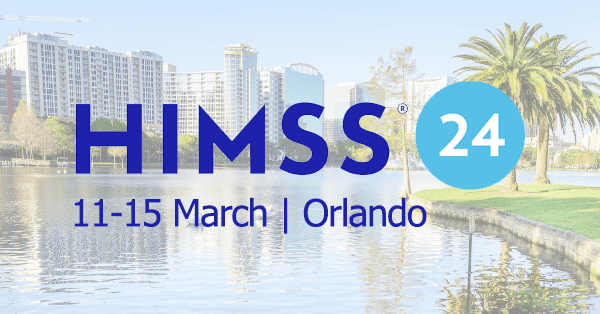Managing an independent physician practice has always been a juggling act. But lately, one challenge seems to be tipping the scales more than ever: healthcare staffing costs.
According to a report, clinical administrative services cost $205 billion and healthcare administration costs $250 billion. These stats highlight the need to control the cost of staffing for healthcare practices.
Your practice should neither be understaffed nor overstaffed. If you are understaffed it will make it harder to manage patient flow, leading to burnouts. If you are overstaffed, it will increase operational costs and strain your budget.
Don’t worry! Read this blog carefully on how to reduce healthcare hiring cost, improve staff retention rates and run your practice smoothly. In this blog, we will cover healthcare staffing challenges and strategies to improve your practice operation with technology.
The Hiring Frenzy: Why Good Help Is So Hard to Find?

Remember when healthcare hiring was all about posting a job listing a and having dozens of qualified applicants by lunch?
Those days are gone.
The healthcare labor market is tighter than ever, with demand for skilled professionals far outstripping supply. And while we’d love to think passion for patient care is the only motivation, salaries are doing a lot of the heavy lifting.
Here’s the rub: Attracting top talent now often means offering higher pay, better benefits, or perks that weren’t even on the radar a decade ago. Flexible schedules, hybrid roles, and mental health days—these aren’t extras anymore; they’re expectations of your staff. But all those upgrades come at a cost, and for many practices, it’s a cost that eats your operational margins.
Did you know? 🤔
As per one report, it was revealed that practices with high staff retention rates experience 22% more profit in their revenue. It indicates the need for digital solutions to streamline operations and costs without exhausting your budget.
Leveraging Digital Tools to Manage Hiring Cycles
CERTIFY Health is a practice management solution designed to reduce the pressure on healthcare staff by automating repetitive tasks and improving the existing staff efficiency.
Training Costs: It’s Not Just About Day One
Okay, so you’ve hired someone fantastic. Great! Now the real work begins. Training isn’t just an orientation binder and a couple of shadowing sessions. It’s an ongoing investment that takes time and money.
Think about it:
- Initial training cost: Time spent training your new hire how to handle a patient flow, navigate the EMR, and handle billing inquiries.
- Productivity dips: During training, your team isn’t running at full speed. And while everyone’s getting up to speed, patient wait times or other KPIs might take a hit.
- Specialized skills: If your practice offers niche services, additional certifications or continuing education could be necessary. That’s even more money and time out the door.
Here’s the kicker—some of those hires won’t stay long enough for you to see a return on that investment, a common challenge given the high turnover rates in healthcare industry.
Did You Know?
Training hour per employee is a key workforce development metric that measures how much time, on average, each employee spends on training during a given period. It includes onboarding, technical, compliance, soft skills, and process-specific training like insurance verification or billing workflows.
Practices should track and optimize training hours per employee to ensure staff are confident handling every step of the patient journey, increasing revenue and patient satisfaction.
The Turnover Cost Treadmill: Spinning Faster Every Year
Let’s talk about turnover cost.
Keeping staff happy and engaged has always been a major staffing challenges, but the stakes are higher now. Burnout is real, especially in healthcare, and employees are quicker to jump ship if they don’t feel valued. Every time someone leaves, you’re back at square one with hiring and training costs stacked up.
It’s not just the direct costs, either. High turnover rates in healthcare industry disrupt team morale and affect practice’s culture. Patients notice when the front desk staff changes every few months, and your team feels the strain of constantly training new faces.
Maintaining Workflow Continuity During Transitions
Automated systems like CERTIFY Health reduce the impact of staff transitions on operational workflows. It automates various tasks like appointment scheduling, reminders, patient intake, and payment collection, helping practices manage operations even when you are understaffed.
What’s the Real healthcare Staffing Cost of Turnover?

Let’s put some numbers to it. Estimates suggest replacing an employee can cost anywhere from 33% to 200% of their annual salary. That includes recruiting, interviewing, onboarding, and that productivity gap we just talked about.
For a front-desk manager making $45,000 a year, that’s at least $15,000 down the drain every time you have to rehire.
Now multiply that by multiple roles across the practice, and it’s clear why cost of employee turnover in healthcare is high.
Is Technology the Answer—or Just Another Expense?
Here’s where things get tricky. Many practices are turning to technology as retention strategies and offset staffing challenges. . Digital solutions like patient scheduling, patient intake, real-time insurance verification, and payment collection can streamline your practice operations, reduce administrative workload, and reduce staff burnout.
For example, platforms like CERTIFY Health handle complex scheduling, payments, and records management, freeing up staff for more patient-focused tasks.
But technology isn’t a silver bullet. Implementing new systems takes time, and there’s always a learning curve. Plus, while software can save money in the long run, the upfront costs can be daunting for smaller practices.
So, before buying any practice management software, check with the vendor to learn its implementation time, training, and other resources offered. If the solution provides less implementation time and better resources for the staff to learn this software, then go ahead.
How CERTIFY Health Proves ROI with Workflow Automation
From patient communication platforms to digital intake systems, CERTIFY Health eliminates inefficiencies, providing measurable cost savings.
Small Changes, Big Impacts
So, what can you do to stop staffing costs from eating away at your margins? It’s not about finding one magic solution—it’s about making small, strategic changes that add up.
- Focus on retention: A little appreciation goes a long way. Regular check-ins, professional development opportunities, and even small perks can make employees feel valued.
- Streamline workflows: Look for ways to simplify repetitive tasks. Technology is your friend here, but even simple process tweaks can make a difference.
- Invest in cross-training: When staff can step into multiple roles, you’re less vulnerable to turnover or unexpected absences.
- Reevaluate your hiring criteria: Sometimes, the best hire isn’t the one with the most experience but the one with the most potential.
Faster Payments, Happier Staff: A Win-Win Solution
CERTIFY Health’s patient payment solutions simplify billing processes, reducing staff workload and improving collections.Shape
Tools like CERTIFY Health’s patient communication platform enhance engagement while integrating seamlessly with revenue cycle management systems.
The Bottom Line

Staffing costs aren’t going away. But by taking a proactive, thoughtful approach, you can manage them without sacrificing your margins—or your sanity. Because at the end of the day (oops, I mean, when all’s said and done), your team is the heart of your practice. And investing in them is investing in your patients, your reputation, and your future.
CERTIFY Health’s practice management platform enhances workflows, ensuring cost-efficiency while maintaining top-notch care delivery.
So, what’s your next step?
Maybe it’s time to rethink your hiring process. Or perhaps you’re ready to explore tech solutions like CERTIFY Health to take some of the pressure off.
Whatever it is, don’t wait too long. Those margins aren’t going to save themselves.











